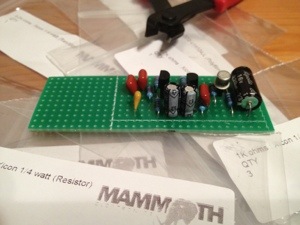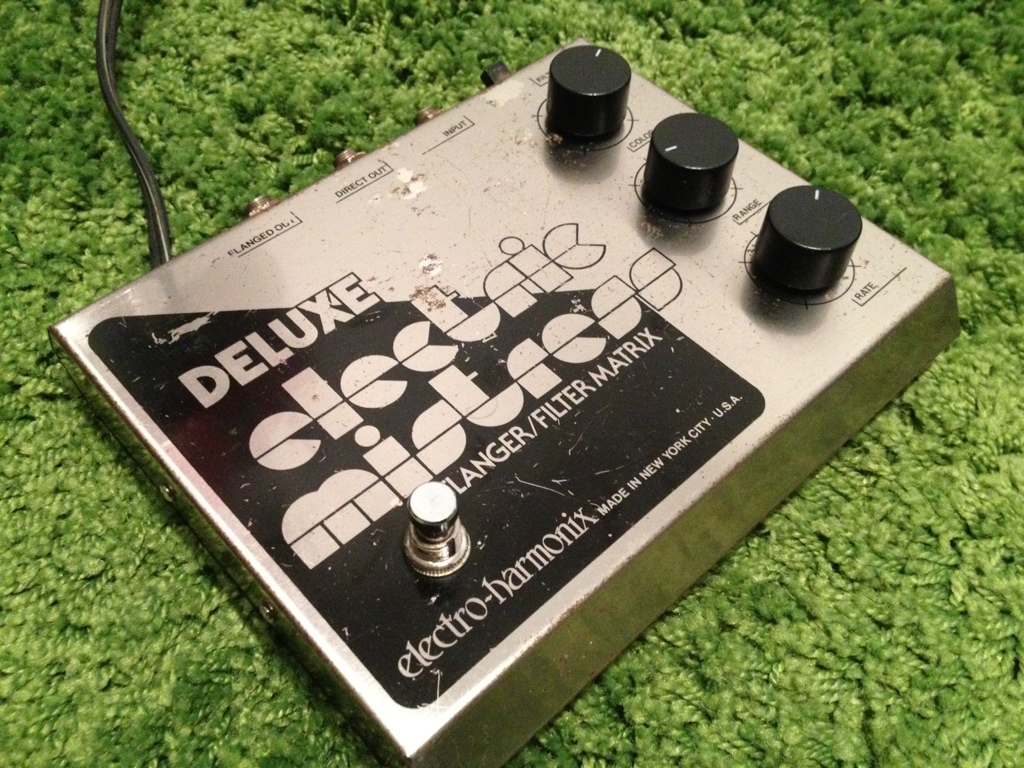I have been focusing on the older Electro-Harmonix Big Muffs the past few weeks and have compiled a list of changes between them. 90% of this information came from Kit’s Big Muff Pi History page
I essentially want to make one pedal that can switch between the Ram’s Head, V3 and the Russian. Here is what I got so far.
Clipping / Blocking Caps – These two caps determine the bandwidth to be clipped by the diodes in the two Clipping Stages, and have the most affect on the sound of the Big Muff.
Feedback / Filter Caps – They are responsible for how fizzy/buzzy a Big Muff will sound. Essentially they filter the amount of high frequencies in the bandwidth, determining if a Muff will sound more on the smooth side or the harsh side.
Tone Stack Filters – Big Muffs are known for their trademark mids scooped tones, meaning the mid frequencies are removed from the bandwidth, making the sound very deep and dark.
High Pass Filter – R5 / C9
Low Pass Filter – R8 / C8
Triangle:
Clipping / Blocking:
C6 .05uF, .1uF, .12uF, and 1.0uF
C7 .05uF, .1uF, .12uF, and 1.0uF
Feedback / Filter Caps:
C10 500pF, 560pF, 470pF
C11 500pF, 560pF, 470pF
C12 500pF, 560pF, 470pF
Tone Stack Filters:
C8 27k (Early), 33k (Common)
C9 27k (Early), 33k (Common)
R5
R8
Ram’s Head:
Clipping / Blocking:
C6 .047uF, .1uF, .12uF, and 1.0uF
C7 .047uF, .1uF, .12uF, and 1.0uF
Feedback / Filter Caps:
C10 560pF, 470pF
C11 560pF, 470pF
C12 560pF, 470pF
Tone Stack Filters:
C8 33k, 39k
C9 33k
R5
R8
V3:
Clipping / Blocking:
C6 1.0uF
C7 1.0uF
Feedback / Filter Caps:
C10 560pF, 470pF
C11 560pF, 470pF
C12 560pF, 470pF
Tone Stack Filters:
C8
C9 22k, 39k
R5
R8
Russian:
Clipping / Blocking:
C6 .047uF
C7 .047uF
Feedback / Filter Caps:
C10 430pF (Early), 500pF(the Civil War model), 470pF (green & black ver)
C11 430pF (Early), 500pF(the Civil War model), 470pF (green & black ver)
C12 430pF (Early), 500pF(the Civil War model), 470pF (green & black ver)
Tone Stack Filters:
C8 20k (Early), 22k (Black)
C9 22k
R5
R8
notes
- Triangle version: R1=33k, C1=4n, R2=33k, C2=10n;
- Ramshead version: R1=33k, C1=4n, R2=22k, C2=10n;
- 1975 version: R1=39k, C1=4n, R2 = 22k, C2=10n;
- 1977 opamp version (1): R1=5.6k, C1=100n, R2=1.2k, C2=120n;
- 1977 opamp version (2): R1=8.2k, C1=100n, R2=1.2k, C2=120n;
- Green Russian version: R1=20k, C1=3.9n, R2=22k, C2=10n;
- Late model: R1=39k, C1=4n, R2=100k, C2=10n
- Reissue version: R1=22k, C1=3.9n, R2=22k, C2=10n;
- Little Big Muff version = reissue version.




